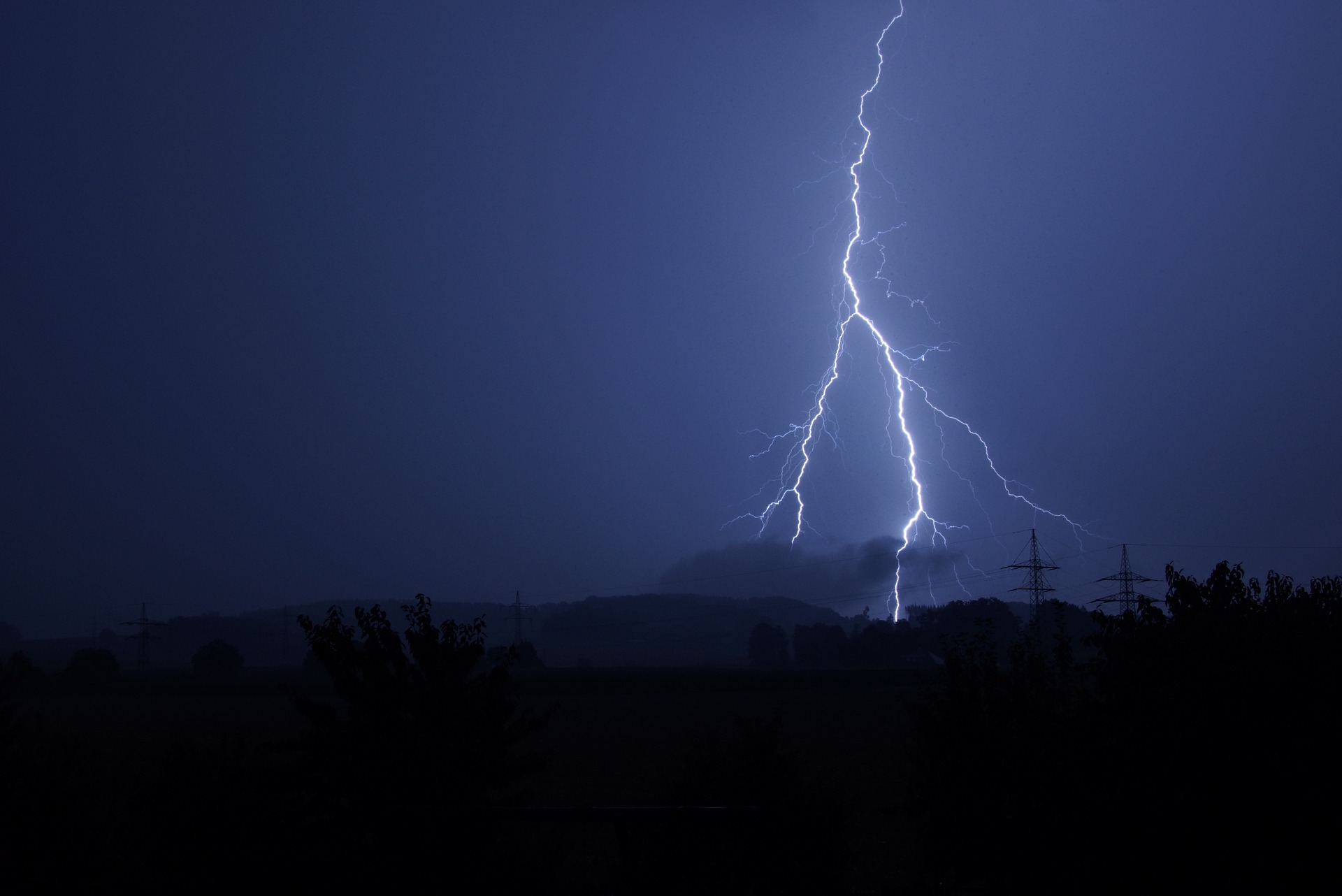During this season, having the appropriate protection from thunderstorms (and all that crazy lightning) is critical for the safety of both your house and your family. Two important components of lightning safety are lightning arresters and surge arresters. Both will protect your home’s electrical system from the sudden excess energy brought on by a lightning strike. Read more: Whole house Surge Protection.

Lightning Rods
Most people are familiar with the story of Benjamin Franklin flying a kite in the middle of a lightning storm. With a metal wire and key, he explored the harnessing of electricity. What he invented during this experiment was essentially the world’s first lightning rod. Contrary to popular belief, lightning rods do not attract lightning to an area. Instead, they redirect lightning strikes that naturally occur close to the structure they’re attached to in order to send the electricity safely away.
Lightning always takes the path of least resistance when it travels from the sky to the ground. On a bolt’s journey from the cloud to the ground, it encounters pockets of dust, differences in humidity, areas of different electrical charge, and more. These imperfections affect the direction of the lightning, which is what gives it the classic zigzag pattern (as opposed to a straight line). You can think of it like a river flowing–the water takes the path of least resistance and thus will flow around a boulder before it ever flows over it.
Lightning rods provide the path of least resistance in the area around your home and are connected to wires that release the electricity safely into the ground rather than allowing the lightning bolt to hit your home elsewhere and cause a surge in your electrical system. Therefore, if your area experiences frequent storms, rods are efficient for lightning safety.
Surge Arresters
Many house’s electrical panels have a surge arrester built-in or attached. This protective device acts as an insulator for the entire home electrical system and discharges excess electrical current that enters from the power line. They are helpful to have in case there is a surge of electricity from a lightning strike that occurs upstream in the electrical system from your house.
A surge arrester has a reference voltage past which it engages its blockers and stops the excess flow. For instance, if the transformer gets struck by a bolt and sends a surge of electricity down the power line, there’s a possibility that this high voltage would reach your circuit breaker. Without a surge arrester, this could trip your house’s breakers or even bypass them and cause damage to the devices you have plugged in.
When you have a surge arrester, make sure it is checked regularly for damage, interference or corrosion. If the arrester becomes cracked or damaged, moisture can enter and prevent the arrester from properly blocking a surge. Nests or excrement from wildlife in its coils will also allow surges to bypass the arrester’s blocks. You should also check it after serious lightning storms if you suspect it handled a surge since multiple large surges can cause it to degrade.
Proper lightning safety may save your life, the lives of your family members, your house, and your devices. Make sure your house is well-armed with a lightning rod and surge arrester.
If you are looking to protect your home’s electrical systems from lightning strikes or simply old wiring, call the master electricians at Promise Electric. We are proud to service residential and commercial customers in the greater Sarasota area.


